One of the countries that bowled me over the most on my travel adventures last year was Vietnam.
And that’s because I’d heard mixed reports.
As a shorthand explanation, for the British among you, Vietnam is what I call a Marmite country…. you either love it or hate it!
Well I can confirm that after my trip there, I was definitely in the “love it” camp.
In fact, Vietnam was easily my favourite country to travel in Southeast Asia with its vibrancy, diversity and unique cultural identity.
So if you’re heading off on an adventure to this amazing destination soon, here’s 15 top travel tips to know before you travel Vietnam…
Related Posts
- 15 Best Places to Visit in Vietnam
- Top 17 Things to Do in Ho Chi Minh City
- The Perfect South East Asia Packing List
This page contains affiliate links meaning Big World Small Pockets may receive a small commission on any purchases at no extra cost to you.
#1 It’s Big Country
This first one of my Vietnam travel tips might sound rather obvious, but trust me, when you first arrive into Vietnam, you’ll realise what I mean in a whole new way.
If you’ve been busy bumbling round Bali, chilling in Cambodia or lazing in Laos, you’re gonna get a shock, because Vietnam is much bigger than all these places!
Plus it’s long and skinny.
Which basically means 3 things…
- That it takes ages to get anywhere
- That instead of there being a circular “travel Vietnam” route, almost everyone travels in this country in a straight line – from north to south or visa-versa
- You have to travel quickly if you want to explore the full length of this country, because most people only get 15-30 days for their Vietnam visa
But being a big country isn’t all negative, for what it does allow Vietnam to do, is cram a heck of a lot of diversity into its borders.
Yes, from the food to the culture, the climate to the geography there sure is a lot of different stuff on offer for travellers in this amazing country, where you really can be lazing on the beach one day, exploring underground caves or tunnels the next and then gorging on incredible street food in a huge and hectic street food market shortly after!
Yup, if there’s one thing you’ll never be in the vastness of Vietnam, it’s bored!
Just enter your details below and I'll email it you - simple!
Information will be sent to the email provided above
#2 Getting a Visa to Travel Vietnam
So while we’re on the subject of how much there is do in this country and how long you might spend there, it seems wise to talk about visas, which are definitely one of the most important things to know about if you want to travel Vietnam
Yup, unlike many other Southeast Asian countries (for which most EU / North American / Aus / NZ passport holders can just get a stamp on entry), most nationalities need to apply for a visa to enter Vietnam as a tourist.
The one exception is other Southeast Asian passport holders, who can enter visa-free… go you guys!
As such, the rest of us have to apply for a visa to visit Vietnam and the advice is to start the process early!
Most regular tourist visas for Vietnam are capped at 30 days and can now be applied for online here or at an embassy in a neighbouring country.
Bureaucracy can be slow, which is why it’s a good idea to start early as you don’t want to risk not getting your visa before your intended arrival… I know has happened to more than a few tourists!
Otherwise, if you can’t wait and you’re the passport holder from a selected handful of EU countries, then the good news is you might be eligible for a 15 day visa-free visit, which means you can be let in with just a stamp on entry at the border.
Being from the UK, I was lucky enough to be part of this group and entered Vietnam overland from Cambodia (read more about how I crossed the border from Kampot to Ho Chi Minh here) armed only with an outbound flight within the allotted 15 day period.
This seemed to be enough to justify my stamp-only stay in the country, but did mean I literally had to run through the country!
As always, I urge you to check your respective foreign office for the most up to date information about your tourist entry to Vietnam.
#3 How to Get to Vietnam?
So after you’ve got your visa to travel Vietnam (or found out you’re eligible for a stamp-on-arrival entry), it’s then probably best you know how to get to this country too!
If you’re already in Southeast Asia, then overland crossings can be made from both Cambodia and Laos (with the former definitely being easier than the latter, mostly due to geography, mountains and road conditions).
Otherwise, if you’re looking at flying, there are regular international flights from across the globe and the Asia Pacific region into the 2 international airports of Vietnam, which are situated in both Ho Chi Minh City and the capital Hanoi.
Easy air connections to Laos, Singapore, Thailand, Cambodia, China, Hong Kong, Kuala Lumpur, London, Sydney and more can easily be found.
As always, I use Skyscanner to find the best flight deals.
#4 How to Get Around Vietnam?
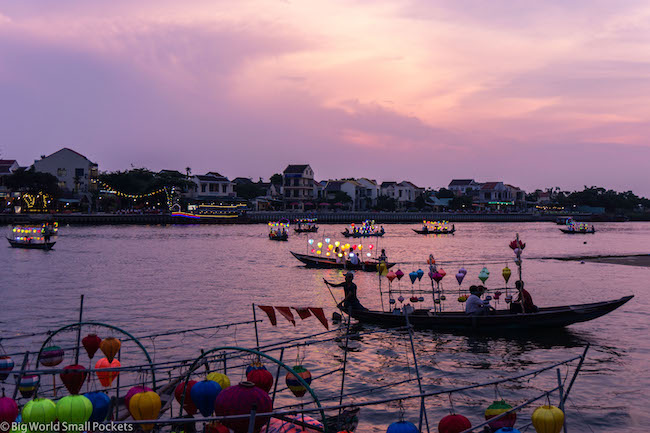
So once you’re in the country, it’s a good idea to think about how you’re going to get around when you travel Vietnam.
Because this country is so huge, domestic flights are the easiest and the quickest way to travel here.
Pacific Airlines, Bamboo Airways and Vietjet are the budget airlines you need to check for the lowest costs, but that said, flying is still the most expensive way to travel in Vietnam, so probs not the best idea if you’re on a strict budget… or watching your carbon footprint.
As an alternative, buses and trains are much cheaper and also incredibly frequent and easy to catch across Vietnam.
With big distances to be covered, taking night buses is a great way to traverse the huge stretches between cities in Vietnam without wasting a travel day (if you’re short on time) and without having to pay for a night in a hostel (if you’re short on funds).
Booking buses or trains in advance is a great idea when you travel Vietnam and I highly recommend the website 12Go, who offer a great price comparison for all services across Vietnam (and other Southeast Asian countries), as well as a secure and easy online booking process in English.
Booking tickets 1 day in advance should be enough time for you to get a seat, and generally standards across all buses and trains in Vietnam are excellent, with sleeper seats available on many nighttime services.
You can also book trains and buses in Vietnam through Bookaway – another great price comparison site.
And for travel within towns in Vietnam, it’s got to be Grab!
Essentially a ridesharing app, like Uber, Grab in Vietnam includes both car, as well as motorcycle services – which are even cheaper and more fun!
There’s also a Grab food delivery service, making this app an absolute must for travellers in Vietnam!
#5 Getting a SIM Card
Now you’ve worked out how to arrive and get around Vietnam, honestly the next thing you should do is get a local SIM card.
This will be so useful when you travel Vietnam – from booking buses and hostels to using Google Maps and Grab services, it’s a must in my book.
There’s a couple of providers to choose from, but I highly recommend Mobifone who have great coverage across the country.
You can go into a shop or kiosk to buy a SIM, but to make things even easier, many hostels in Ho Chi Minh and Hanoi (the 2 cities you’re likely to arrive into) sell tourist SIM cards, making life a lot simpler!
For $10 USD you can buy a SIM card that lasts 2 months and gives you 4GB of data a day – got to love Southeast Asia for that!
I stayed in the excellent DaBlend Hostel in Ho Chi Minh, which I highly recommend, and these guys sold me a SIM on my first night – brilliant!
#6 Accommodation
And while we’re on the subject of DaBlend, it’s time to talk about the types of budget accommodation you’re likely to be staying in when you travel Vietnam.
Obviously, there’s a stack of hostels across the country, which are awesome for solo travellers in particular.
Most have both dorms and private rooms and are incredibly good value.
I always book hostels in Vietnam through Hostelworld.
Outside of hostels, both homestays (especially in more rural parts of Vietnam) and independent guesthouses are common.
To find these, I always search Agoda for the best prices.
#7 Best Vietnam Itinerary
And now comes the big question… where to go and what to do in Vietnam.
Learn more about this is my post about the 15 top things to do in Vietnam, otherwise I suggest allowing a minimum of 14 days in the country if you want to get a good flavour of it all.
Better, however, would be a stay of 30 days when you travel Vietnam, as this is a great amount of time if you want to travel from north to south in this country… or visa-versa.
The destinations you can’t miss in my opinion are:
- Ho Chi Minh City inc Cu Chi Tunnels + the Mekong Delta (ideally allow 3-4 nights)
- Hoi An & Hue (ideally allow 3-4 nights)
- Nhang Pha (ideally allow 3 nights)
- Hanoi and Cat Ba Island (ideally allow 4 nights)
Additional destinations if you have longer include:
- Dalat
- Sapa
- Tom Coc
- Phu Quoc
- Ha Giang
For more information check out my perfect 2 week Vietnam itinerary, which also includes 5 plans if you want to extend your trip.
#8 When to Travel Vietnam?
But when to undertake this itinerary? Now that’s the real question.
And it’s a hard question too, because Vietnam is a pretty tricky country when it comes to the best travel season.
This is due to the fact that the climate varies wildly between north and south Vietnam, meaning there’s only a few months of the year when it’s possible to visit both without being caught in a monsoon!
The best time to visit the south of Vietnam is between November and April, which coincides with high season across most of mainland Southeast Asia.
By April time it’s getting very humid in the south as the rains are on their way.
During November through April however, the north of country can be very cold and often wet.
When it’s warmer in the north (from April until November) it’s monsoon season and raining a lot in the south!
So, as you can see, when it’s raining at one end of Vietnam, it’s dry at the other, which equals a problem!
2 of the best months to travel Vietnam therefore are when you stand a good chance of sun at both ends of the country – namely during April and November.
I visited Vietnam in April and found it to be a good time to travel right across the country with sunny and dry conditions most days (outside of Halong Bay that is!)
Finally, the only other thing to be conscious about, weather and climate-wise, when you travel Vietnam is typhoons – stay tuned to the news to avoid these guys.
#9 Money & Costs
Knowing how much travelling in Vietnam costs, as well as how to pay for your travels and how to access your money, is a key point for visitors here.
The first and best thing to note here, is that Vietnam is an extremely cheap country to travel and with a budget of £30 per day, you can have a great and very active time.
Being very strict with money, you could certainly go much lower than this too, let’s say between £15-20 if you’re really pushing it.
The Vietnamese currency is known as the Dong, but the less happy news is that it has many zeros.
What I mean is that the Vietnamese Dong is printed and traded in huge denominations, so notes of up to 500,000 are common.
This is because $1 USD is worth almost 25,000 Dong… a complete nightmare is your maths is as bad as mine!
And it gets worse when you learn that that the 20,000 and 500,000 Dong notes look very similar!
Always ensure you are getting the correct change after buying anything because handing tourists back 20,000 notes instead of 500,000 ones, is one of the oldest tricks in the book here!
Learn more about what it costs to travel Vietnam in this breakdown budget post I wrote.
And when it comes to paying for things in Vietnam, you want to ensure you’re not being charged overseas transaction fees or getting poor exchange rates when using your card abroad, which is why I always take my Wise card away with me wherever I travel.
The easy way to spend abroad with real exchange rates, no markups and no sneaky transaction fees, you can use your Wise card just like a debit card here… and it links easily with Google and Apple pay – sold! Grab yours here.
#10 Language
And not only is the money and currency situation in Vietnam very confusing, so is the language!
Thankfully Vietnamese does largely utilise the Latin Alphabet (like English) and adds in a few accents.
Unfortunately, these accents signify tones, because Vietnamese is a tonal language, which makes it incredibly difficult for English speakers to get their heads around.
Making life easier is the fact that English is wildly spoken in the tourist areas and among young people, but in rural areas, you’ll largely be relying on body language and Google Translate!
Have fun!
#11 History
Vietnam has a fascinating history and from its ancient cultural practices to the more recent American war, there’s a lot to learn about when you visit this country.
Key places to do just this are the Cu Chi Tunnels just outside Ho Chi Minh City, the Demilitarized Zone in the centre of the country, as well as the many museums in all the major cities.
If you’re interested in learning more about the American War in particular, then there’s a great series on Netflix, called The Vietnam War, that fills in a lot of background information and which I highly recommend.
#12 Shoes Off
It’s a fairly random Vietnam travel tip, but it’s a key cultural point to note and that is that when you enter just about any building in Vietnam you need to take your shoes off.
This means wearing sandals, that can easily be slipped on and off several times a day, really is the best option when travelling in this country.
I basically lived in my Birkenstock Arizona sandals when I travelled Vietnam and highly recommend them as a great travel footwear option here.
#13 What to Pack When You Travel Vietnam?
Clothes for warm conditions (shorts and t-shirts) are essential in Vietnam, as are clothes for rainy conditions (waterproof coat and boots) so packing for this country can be tough!
And don’t forget the swimwear, towel and sunhat for beach days, as well as the activewear and good hiking shoes for outdoor adventures.
Plus you may want clothes for going-out or city-sightseeing in.
Learn more in my ultimate Vietnam packing list article, which includes an item-by-item checklist for you to follow.
Otherwise, as a quick overview, here’s 5 packing essentials I wouldn’t travel to Vietnam without…
#1 Lonely Planet Guidebook – The Vietnam Lonely Planet is excellent and very helpful for any trip to this country with lots of top tips and recommended places to eat.
#2 Walking Shoes – There’s likely to be a lot of walking in Vietnam especially around those temples and cities! As such, I advise packing a pair of good runners, like these New Balance trainers, which were perfect for my time here.
#3 European & British Power Adapters – Vietnam has a mix of power outlets, but generally opts for a mix of the European and British ones, so make sure you come prepared with a Skross world adapter.
#4 Camera and Lens – I love my Sony A6000 mirrorless, which was ideal for capturing the colour, chaos and cuisine and charm of Vietnam.
#5 Travel Scarf – A great multi-purpose travel item that can be used to safely store valuables as well as cover your shoulders while you explore many of Vietnam’s top sights, a travel scarf is a must for me!
#14 Coffee & Food
And now we’re finally getting to the important stuff on this list of the 15 things you need to know before you travel Vietnam, so coming in at number 14, it’s coffee.
Hello to all the caffeine addicts out there, Vietnam is the country for you!
Coffee here is both a social event and a deeply cultural practice.
Local coffee shops line the streets everywhere and there’s an array of unusual options to try, including egg coffee.
Unlike most people, I wasn’t a huge fan of this and stuck to the just the black coffee, but normally any white coffee is served with condensed milk.
All the coffee here is incredibly strong and I got the caffeine overload shakes on more than one occasion after making the mistake of ordering a second!
You have been warned.
The food in Vietnam is fabulous and compared to the many fried staple offerings in most other Southeast Asian countries, I found it fresh, healthy and delicious.
I also found Vietnam the easiest country to be a vegetarian in Southeast Asia… thank goodness!
Just look for the restaurants with the word Chay by them (often found near Buddhist Temples) and you’re guaranteed a yummy animal-free meal.
For breakfast here, it’s all about the Banh Mi – a hangover from the French colonial period, this is essentially a small baguette toasted and served with a fried egg, and sometimes meat, inside.
Yummy fresh fruit juices are available everywhere very cheaply and matcha is also a common, delicious and healthy drink.
With most meals, tea is served instead of water. It normally comes unsweetened and flavoured with Jasmine.
#15 Safety, Insurance & Solo Female Travel
I travelled throughout Vietnam by myself, as a solo female traveller, and found it incredibly safe.
Aside from the language barriers, it’s pretty easy to travel here and this country is more economically developed than I imagined.
Infrastructure, such as roads, buses and accommodation standards, are good and people were kind, respectful and friendly in my experience.
World Nomads offers simple and flexible travel insurance. Buy at home or while travelling and claim online from anywhere in the world.
Alternatively, if you’re a long-term traveller, digital nomad or frequent remote worker seeking travel health cover, check out Safetywing’s Nomad Insurance policies.
PIN IT TO PINTEREST!
Well there they are, my list of the 15 things you need to know before you travel Vietnam.
Have you been to this country?
Do you have any info to add that will help fellow travellers out?
Please drop it into the comments box below if yes…

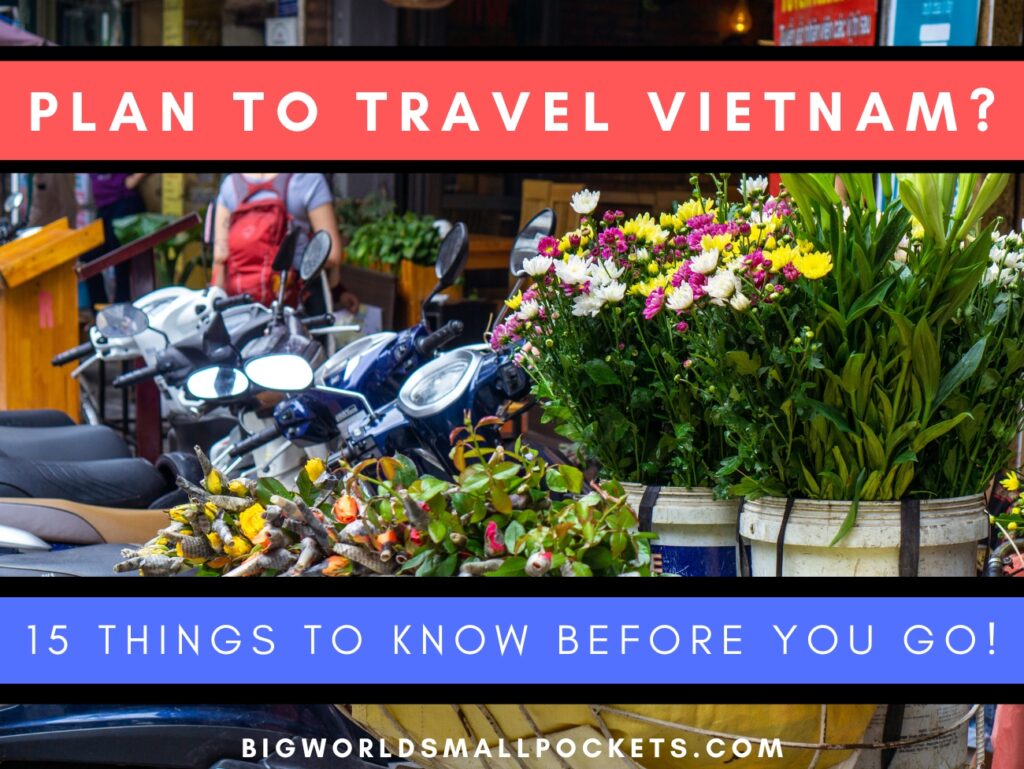

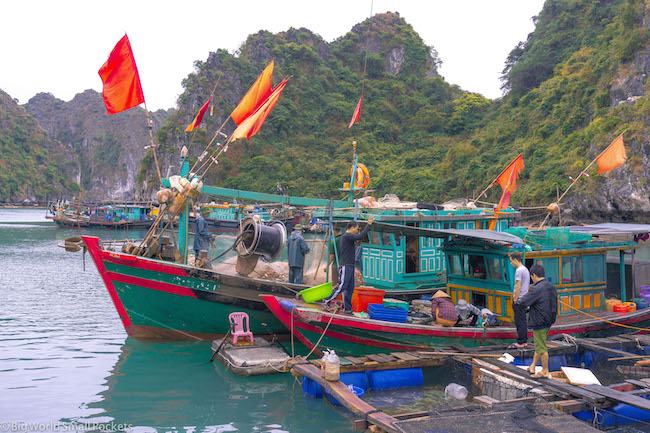
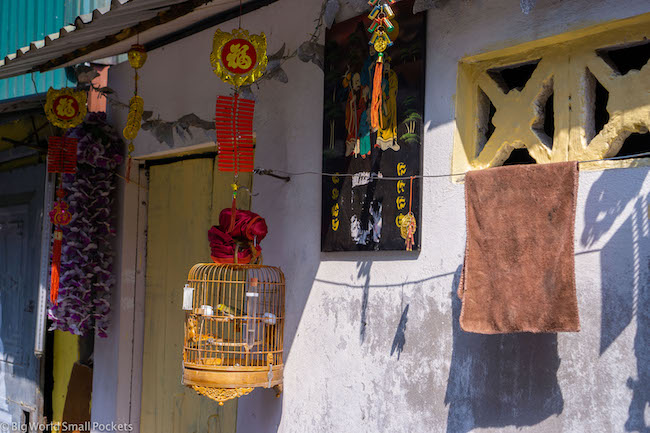
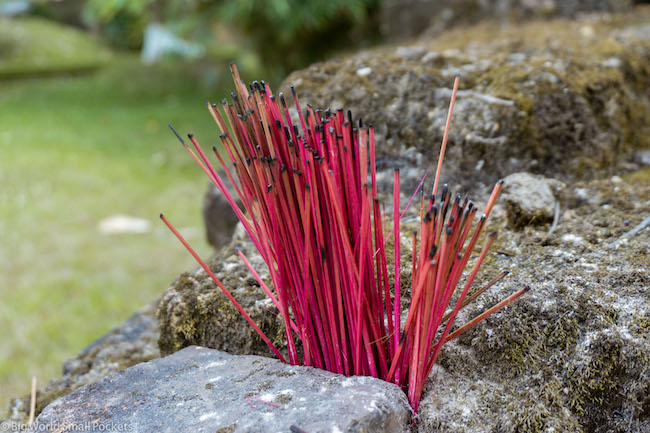
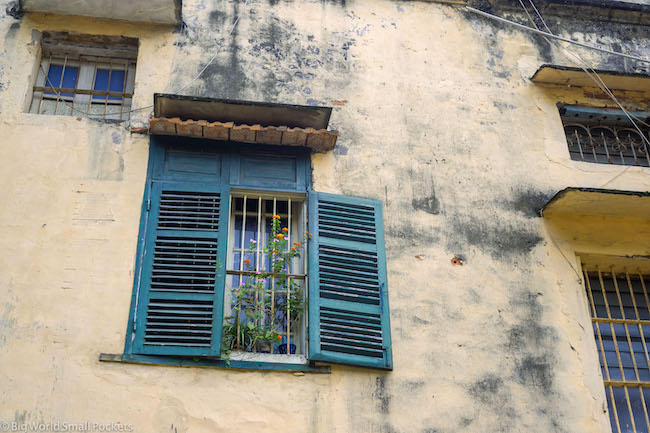
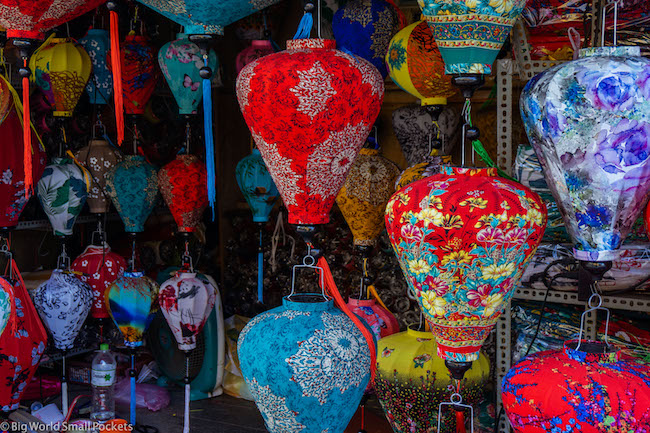
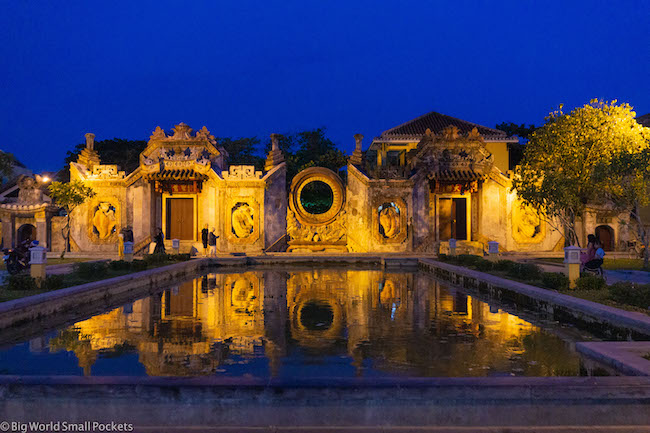
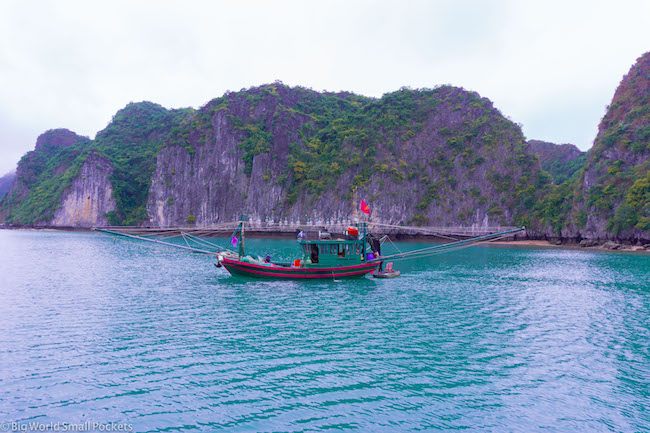
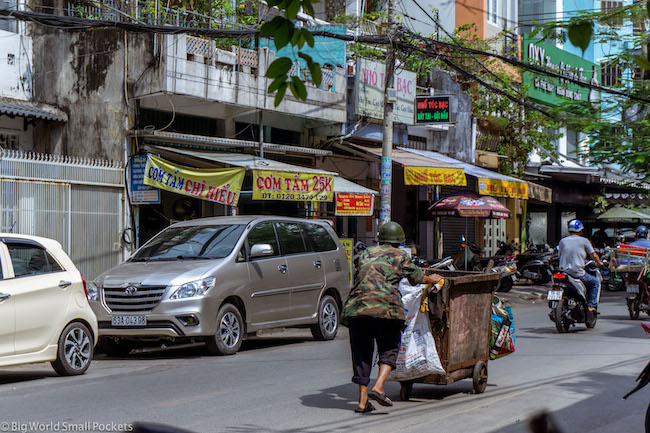
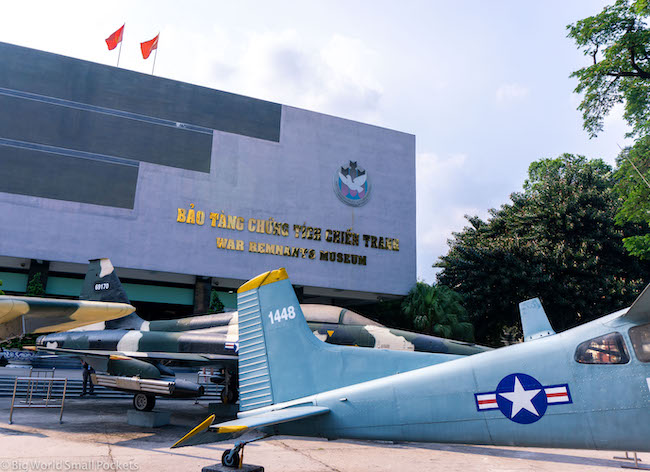
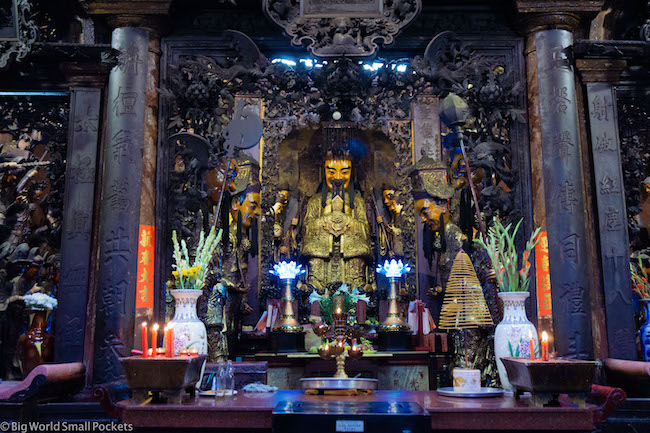

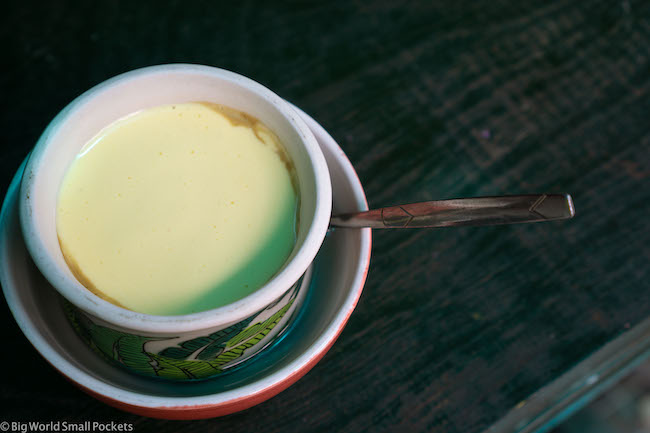

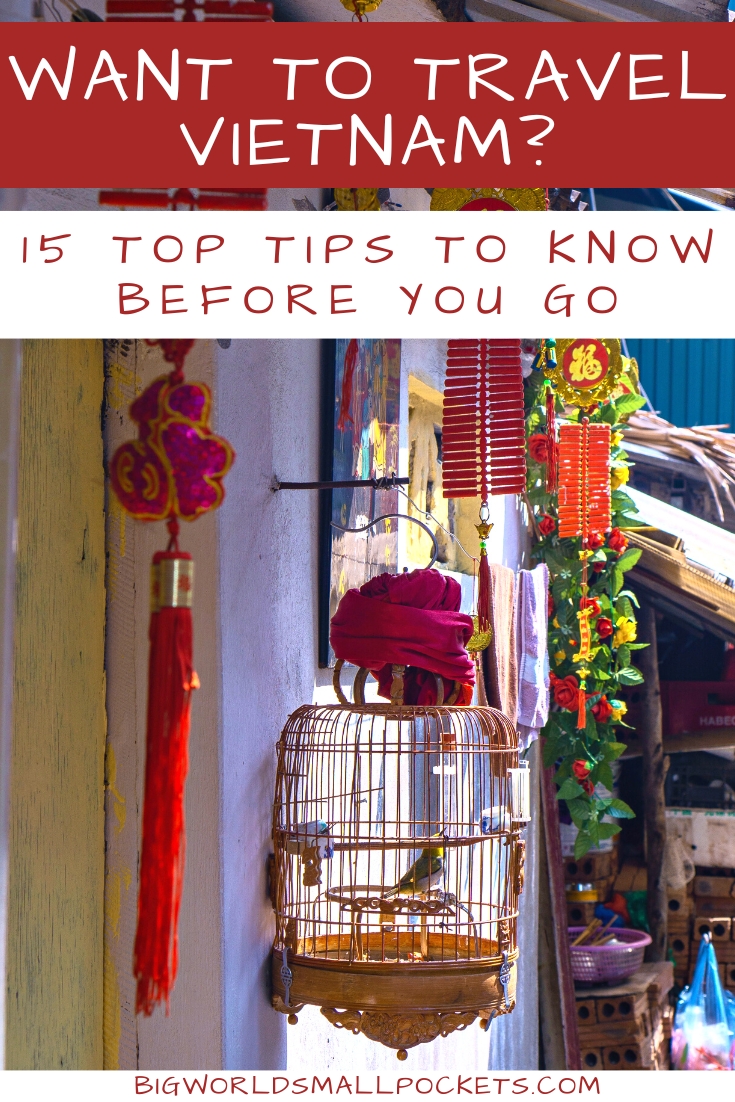
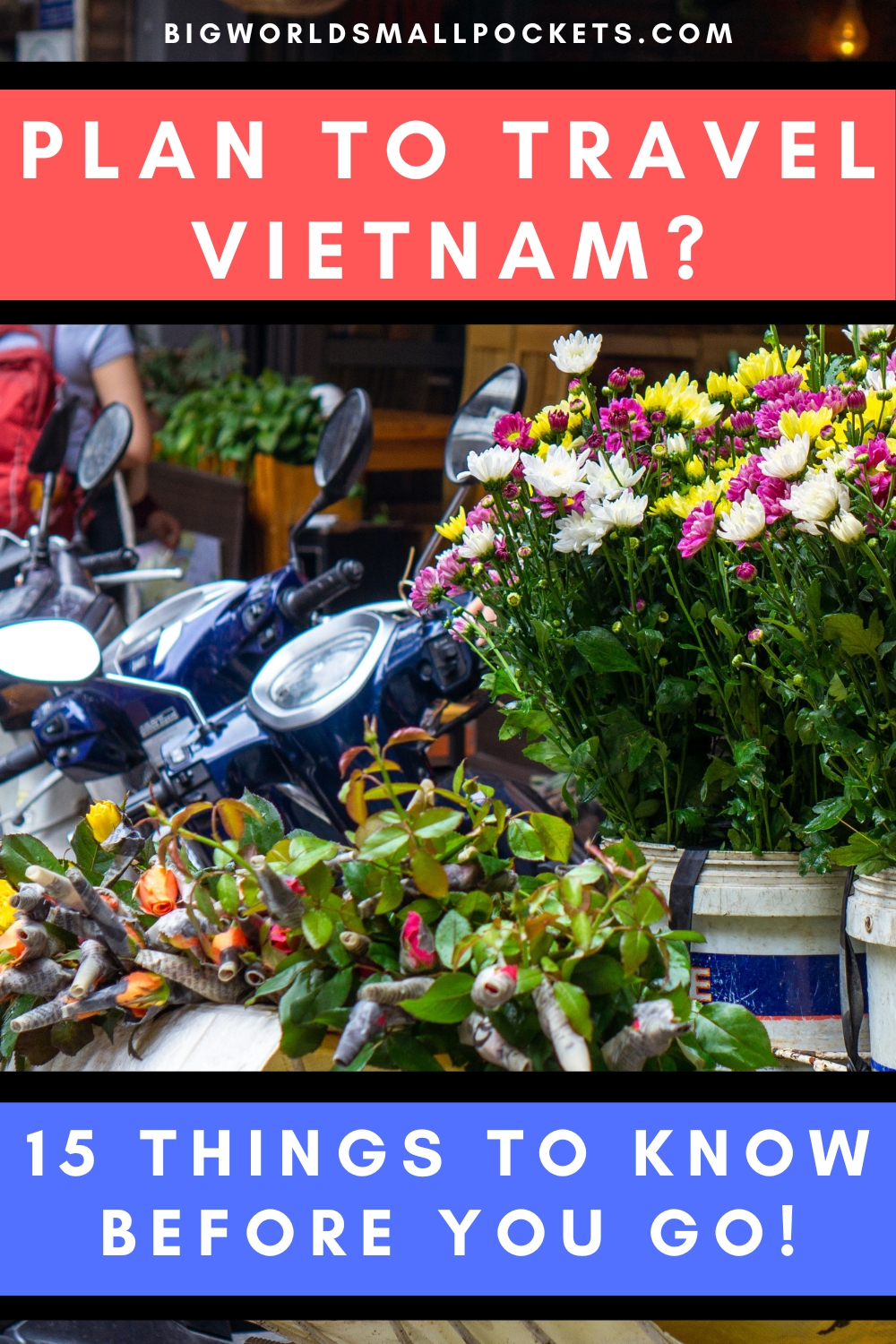
I’d like to add that Jetstar Pacific is now rebranded as Pacific Airlines. There’s also another low-cost carrier, Bamboo Airways. In total, there are now 3 low-cost carriers: Pacific Airlines, Bamboo Airways, and Vietjet
Thank you Eric, this is very helpful information and I am updating the article accordingly. Best wishes and thanks again, Steph 🙂